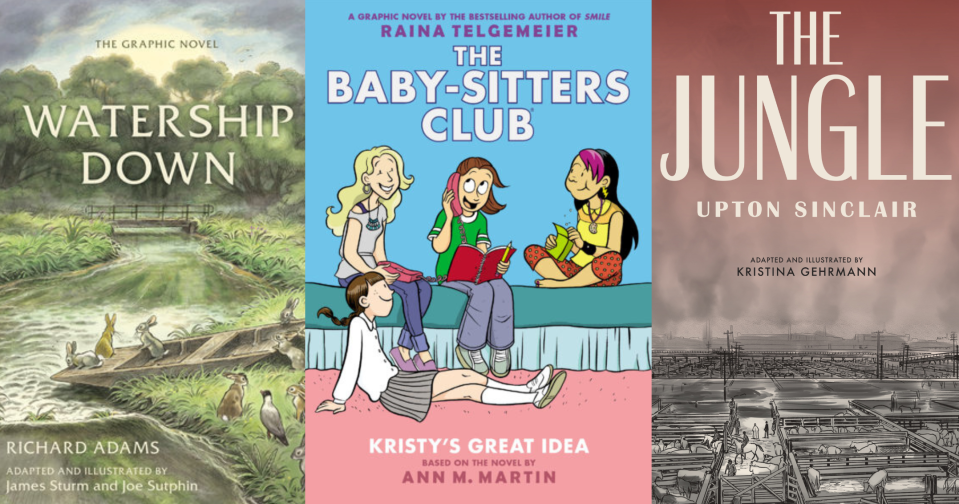More books are being adapted into graphic novels. Here's why that’s a good thing.
Classic novels are getting a makeover.
You may have noticed familiar titles such as "The Baby-Sitters Club" series, "The Jungle," "To Kill a Mockingbird," "Parable of the Sower," and "Watership Down," rereleased in recent years as graphic novel adaptations.
Graphic novels are long-format books that, like comic books, use illustrations alongside text as the method of storytelling.
Here's why publishers are leaning more into the graphic novel format – whether adaptations of literature and well-loved series, reimagined classics or original titles – and why it's a good thing for readers.
Graphic novels bring new audiences to old stories
Many of the graphic novel titles that have been big hits with readers are adaptations of previously published novels, says Kaitlin Ketchum, editorial director for Ten Speed Graphic, an imprint of Penguin Random House that launched in 2023.

"They see that it's a way to expand their readership and to get their content into different people's hands. It's a way to make the content a lot more accessible and approachable," Ketchum says.
The “Baby-Sitters Club” adaptations are a good example of new young readers finding the series via the graphic novels and “jump-starting the series again,” helping open the door for more adaptations, says David Saylor, vice president and publisher for Graphix, an imprint of Scholastic.
More: 20 book-to-screen adaptations in 2024: ‘Bridgerton,’ ‘It Ends With Us,’ ’Wicked,’ more
Younger readers embrace graphic novels like never before
When the Graphix imprint launched in 2005 “there were still mixed feelings about graphic novels,” Saylor says.
That’s not surprising. When I was growing up, I was told comic books, Japanese manga and graphic novels didn’t count as “real books.” It’s a sentiment that may be a holdover from decades ago when the government conducted investigations into the comic book industry in the 1950s, during which a US Senate subcommittee was even created to see if there was a link between comic books and juvenile delinquency.
But graphic novels are real books, and they have real value for literacy growth. Graphic novels can be appealing and familiar for some readers, in particular young or reluctant readers. And literacy experts agree.
“The acquisition of skills begins with engagement and enjoyment,” says author, education expert and counselor Tracee Perryman. “Literacy strategies are more effective when we build connections between the content and the child's interests.”
Graphic novels present a learning opportunity and can be a way to appeal to a young reader’s interest through illustration. For young or reluctant readers, graphic novels can a gateway to the wider world of reading.
“Librarians were at the forefront of it, they've embraced graphic novels for years,” Saylor says. “Back in 2005, they were telling us that the most checked out books in their collections were the graphic novels.”
How graphic novels can aid literacy growth
Because graphic novels, in particular adaptations, can be more approachable for some readers, “we see a lot of pickup in educational markets for books like that, which is really cool and gratifying to see,” Ketchum says. “We'll actually create teacher's guides that include not just stuff about the content of the book, but also about the graphic format.”
And graphic novels and comic books can actually help young readers expand their imagination around what they are reading.
More: What is Afrofuturism and why should you be reading it? We explain.
“Graphic novels are a way for children to use context clues to dig deeper into a plot,” Perryman says, “and then that sets the stage for better understanding of the main ideas and the theme of the story.”
The format can even encourage re-reading. Illustrators adapting classics or working on original titles must bring visual context to the storytelling, weaving nuance (and often Easter eggs) from the world-building in previous prose. Graphic novels are more than pictures on a page. Sometimes words are not enough.
“We live in this incredibly visual world where we have to be very media literate,” Ketchum says, “but we also have to be visually literate.”
This article originally appeared on USA TODAY: More books are being adapted into graphic novels: Why that’s good news

